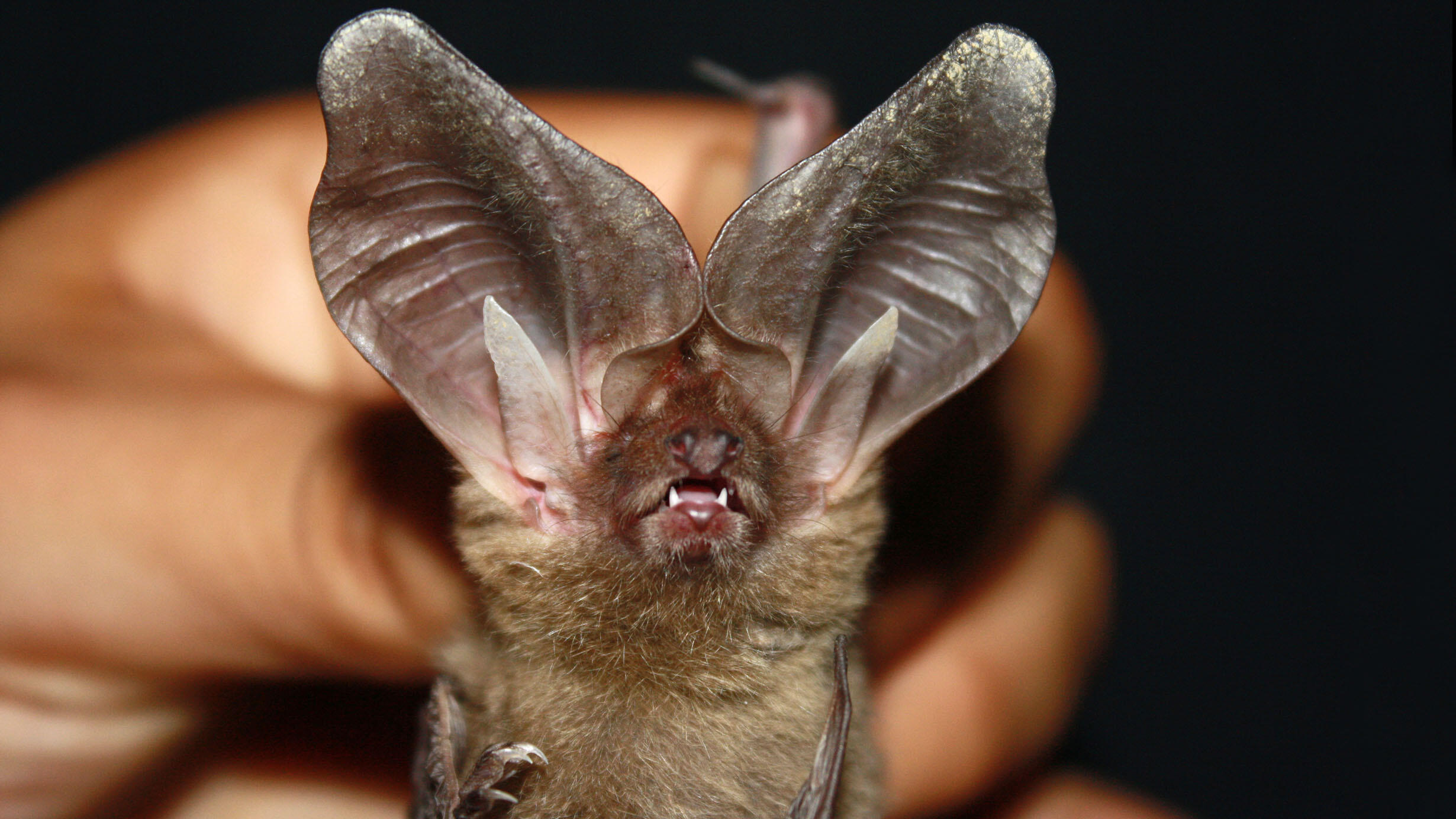 The newly described bat species, Histiotus mochica, from the Department of Piura in northwestern Peru, is known for its distinctive ears.
The newly described bat species, Histiotus mochica, from the Department of Piura in northwestern Peru, is known for its distinctive ears.© Paul Velazco
Scientists have described a new bat species from northwestern Peru, along with evidence that it was known to the pre-Incan Moche people more than 1,000 years ago.
"The title of our paper is 'A new species of bat…' but this species is not new. It's always been there, and there were people in the past that already knew a lot about it," said lead author Paúl Velazco, a Museum research associate and visiting assistant professor at Arcadia University. The study was published this month in American Museum Novitates.
The Moche people, also known as the Mochica, lived on the northern Pacific coast of Peru from 100-850 C.E. in a valley between the ocean and the Andes. They crafted exquisite ceramics, many of which realistically portray local animals and plants.
One ceramic vessel in particular, in the collections of Cleveland Museum of Art, depicts a bat with a thick band of tissue connecting its strikingly large ears and without a noseleaf—a structure found on the noses of some bats that plays a role in echolocation.
Courtesy of John L. Severance Fund/Cleveland Museum of Art
Velazco stumbled upon an image of the vessel online and realized it represented a bat species of the genus Histiotus that he had collected as a Museum postdoctoral researcher in 2012 but which was not yet known to the scientific community. "There are other bat species known from the Moche area of influence, but none have those characteristics," said Velazco. Velazco and his colleagues named the species Histiotus mochica in honor of the Moche.
Bats of the genus Histiotus are medium-sized insectivores adapted to dry climates and can be found from the Pacific coast of Peru to the Atlantic coast of Brazil. However, because these bats are not easily caught in the wild, their genetic relationships to one another are not well understood. This has led to disagreement about how many Histiotus species should be recognized.
To understand H. mochica’s place within the Histiotus family tree, Velazco and the research team compared its physical features and DNA to other Histiotus bat species. They found that in addition to its unique ears, H. mochica is the only Histiotus species whose fur is a single color—brown—rather than multiple colors. Despite these differences, the genetic analyses revealed that H. mochica is closely related to these species.
This new addition increases the total number of bat species identified in Peru to 192, the third highest in the world. Velazco believes there are still many more to find.
"Scientists need to work with Indigenous communities because they know everything firsthand," he said. "Of all of the species I have described, this one has the most meaning, because it shows that connection."